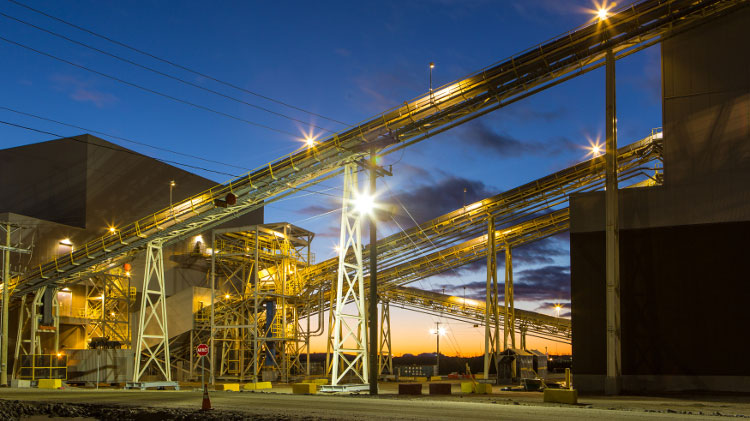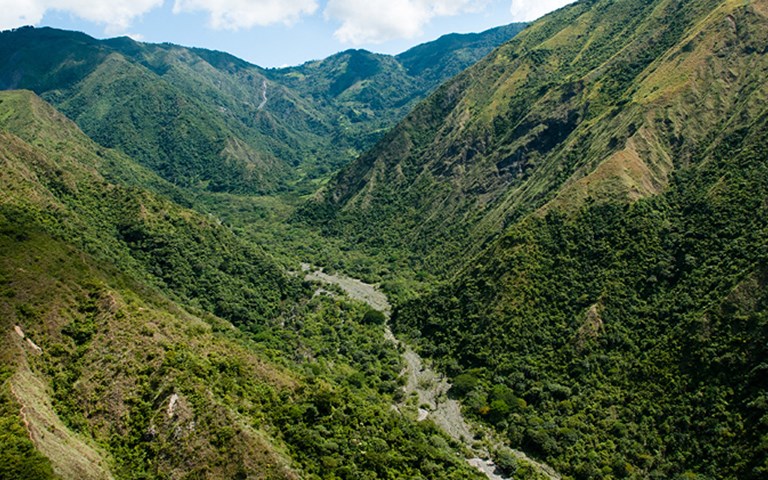Continental Gold recently enlisted University of British Columbia professor Marcello Veiga to help create a strategy for traditional miners working on its Buriticá property in Colombia. Courtesy of Continental Gold
Canadian miners continue to wait for stability to unlock Colombia’s mining potential after Colombians rejected a historic peace deal between the government and the nation’s largest rebel group in October.
The September ceasefire agreement with the Revolutionary Armed Forces of Colombia (FARC) would have ended 52 years of armed conflict and political instability that has prevented oil and mining companies from accessing resource-rich land, and has enabled illegal artisanal mining on land owned by foreign corporations.
But in a national plebiscite, 50.2 per cent of Colombians voted against the deal, brokered by President Juan Manuel Santos with FARC leader Timoleon Jimenez. Critics said it went too easy on the Marxist guerilla group. Under the deal, FARC would have disarmed and surrendered its weapons and in exchange, its members would have been guaranteed 10 seats in Congress and received more lenient sentences or avoided jail time for crimes including murder, kidnapping and drug trafficking.
Though the deal fell through, FARC leaders have said they still want peace and have no plans to resume fighting, and President Santos, who won the 2016 Nobel Peace Prize in October for clinching the deal, is continuing to search for solutions.
Most existing mining operations are not in FARC-held areas, said Ari Sussman, CEO of Continental Gold, which has projects in Colombia. But the ceasefire would have opened up those conflict zones to exploration.
“I think they will [open up], it’s just put a delay on it,” Sussman said. “There are a lot of questions right now and the smart move is to just wait and see until you start to hear some information.”
Continental Gold’s Berlin exploration project is in a FARC-held area of Antioquia and cannot be accessed, Sussman said. The company did exploration work on the 38,000-hectare project in 2008 and 2009, but by 2010 FARC had gained a larger presence in Antioquia, raising safety concerns for tourists and business alike. A ceasefire would have been welcome news for renewing Continental’s efforts at the mine, Sussman said, but “now we’re going to wait.”
“We need to understand a little better how it’s going to play out first.”
Sussman said the plebiscite’s outcome was “a big positive” because it will push the government to seek wider input toward a solution.
“The people’s voice is going to be listened to,” he said. “They didn’t vote against peace. They voted against certain aspects of the agreement.”
In fact, a trend toward peace has been making Colombia increasingly attractive to foreign mining companies for several years, said Marcello Veiga, a mining engineering professor at the University of British Columbia (UBC), who has consulted with both mining companies and NGOs on mine development challenges in the country.
Crime has sparked safety concerns for decades – including a 2010 incident when a Canadian executive with Braeval Mining Corp. was kidnapped and held for seven months by a different rebel group – but Veiga said the number of incidents is on the decline.
“Colombia is the best place to invest in mining in the world now. It’s peaceful, it’s not very well known, the government is investing a lot in infrastructure […] There’s a good momentum,” he said.
But as Canadian companies wait and watch, Veiga warned the largest threat to foreign projects in the country is still artisanal, or traditional, mining. While many artisanal miners are legitimate and licensed, a large portion illegally work on land owned by companies. They take their ores to processing centres – often run by criminal organizations and rebel groups, including the FARC – that pollute the environment on a massive scale by dumping mercury and cyanide into the water.
Veiga said Canadian companies looking to invest in Colombia should be aware of how to engage with the existing network of artisanal miners.
“It’s a good chance for Canadian mining companies to make some kind of agreement or deal with artisanal miners to establish an operation there,” he said. “I don’t recommend any Canadian company to go to Colombia and start to just do the same classical process that they have in Canada because most of the areas with gold now are occupied by artisanal miners.”
There is also the added social context of local populations being wary of foreigners. Veiga raised the irony of locals complaining about “the big Canadian company” polluting their land, even as artisanal miners dump toxic tailings into their water.
“The situation is not environmental, it’s social,” he said. “The local communities see artisanal miners just bringing more benefits for the locals than a big Canadian company. We have to work with them and just show the benefits that a Canadian company is going to bring.”
It is a challenge Continental Gold has already grappled with at its Buriticá project where illegal miners were accessing veins the company had already defined. Sussman said they were also spreading negative sentiments about Continental’s project, and their mining methods were polluting the water at the site and in nearby communities.
The government stepped in and the illegal miners and their families moved away with the help of a third-party NGO that made sure they had food, water and psychological support, Sussman said.
In the aftermath, Continental Gold enlisted Veiga and UBC to help formalize traditional miners working in the area for years into companies that could legally work on Continental’s land.
About 80 per cent of gold mined in Colombia is illegal and the practice is now more lucrative than the cocaine trade, according to the Global Initiative Against Organized Crime. FARC is one of the biggest supporters of artisanal mining in Colombia, and government estimates suggest 20 per cent of the group’s funding comes from gold mined illegally.
A peace settlement between the rebel group and the government could help curb that illegal mining, Sussman said.
“It won’t go away completely but it will reduce,” he said.



